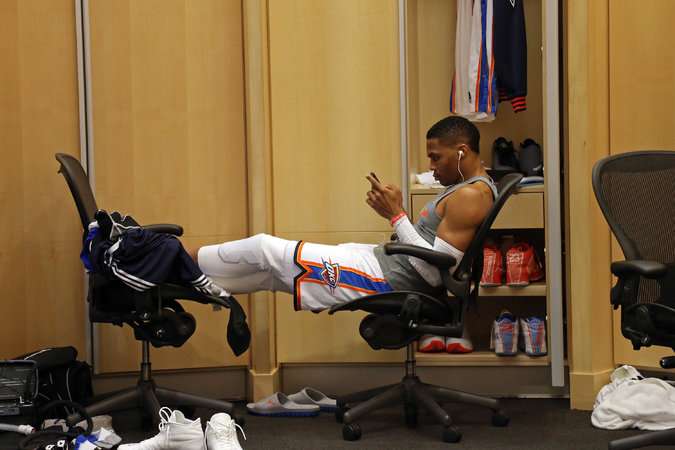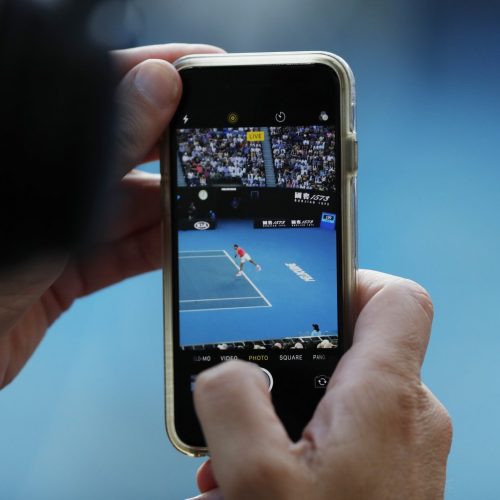How close to the action is too close?
The perpetual ‘winner’ of the social media arms race will be the entity that can deliver information that people want, when and how people want it without breaching any visible (or otherwise) regulations regarding social media interaction.
Footballing superstar Cristiano Ronaldo has come up trumps more than once on social media with his presence on Twitter and Instagram separating him from the rest. And while many may deem his social media activity to be intrusive to himself, few complain because when it comes to personal life, there aren’t really any defined boundaries.
However, what happens when athletes break those invisible boundaries and take fans to a place that’s potentially harming, not only to the athlete, but to the integrity of the respective sport?
Revelations uncovered by the New York Times last week that NBA players were checking their phones during the half-time interval very much dance along the line of what is appropriate and what isn’t. But Bristol snooker player Judd Trump’s tweet during a match at the weekend ran so far past the line that the line is now a dot to Trump (Friends reference intended).
Drinks on me later if I get out of jail here #betfredworldchampionship
— Judd trump (@judd147t) April 21, 2016
It’s hard for anyone to argue that tweets like Trump’s can do any favours to any sport regardless of the content and the reason (other than to extract likes and retweets). Using social media during such a time is simply damaging to the sport, whatever sport it might be.
Of course, with social media playing such a prevalent role in our everyday life, we’d be thrilled if the likes of Cristiano Ronaldo could do a quick 10-minute takeover of the Real Madrid Snapchat during the half time interval of a Champions League match. The likes and follows and retweets and tweet quotes would probably break the internet.
But what purpose does it serve other than to fulfill our insatiable need to feel as close to the action as we can? The answer? None.
What damage can be done to the sport and to the athlete? The answer? A lot
Cricket lovers out there won’t forget in a hurry the headlines when South African born English cricketer Kevin Pietersen was heavily reprimanded for messaging South African players in the English dressing room, whilst in the middle of playing a test series against the team of whose he was messaging. Or when the ICC banned phones from team dressing rooms in order to clamp down on corruption.
Considering this all occurred before social media’s relentless push into the mainstream, it already portrays how much of a problem the issue was to begin with.
A large majority of sports have managed to navigate this kind of grey area with athletes rightly placing a lot more emphasis on theirs and their team’s performance – not willing to jeopardize anything for the sake of a viral tweet.
Far beyond them and their team, the bottom line is that players have a duty, not to themselves or even to their fans, but to their sport.

The possibility of someone using their access to a digital device during a match to commit acts of corruption are far too possible in this day and age to ever believe there can be a happy medium – look at what the Tennis world has been embroiled in since the beginning of the year as well as the illness that has plagued cricket for the past 20 years. Because, if they can use their access for something they deem to be positive, they can certainly use it in a way deemed to be negative.
You can hardly accuse the athletes of being ignorant or selfish for their desire to engage during matches, particularly in a world where social media is taking over the world, but there is close and there is too close. Just who defines what too close is, is unclear but if it’s not answered soon by the respective organisation, administration or team, the question may soon be made redundant.
About author
You might also like
Mallory Group Launches White Paper on the ‘New Normal’ for Sports Rights Holders
Sport is proving to be one of the high-profile business casualties of the Covid-19 pandemic. However, its slow and structured return will be a key factor in life entering the
The seven essentials for achieving successful sports branding
By Daniela McVicker When it comes to sports, great branding is a must. Your brand influences how people see your company or team. It helps you to forge connections with
Live Chat: A New Social Experience in Sports
Article written by John S. Kim, CEO and co-founder of global API company SendBird Social media rose to prominence throughout the world due to its potential for connection. Social channels provided the








